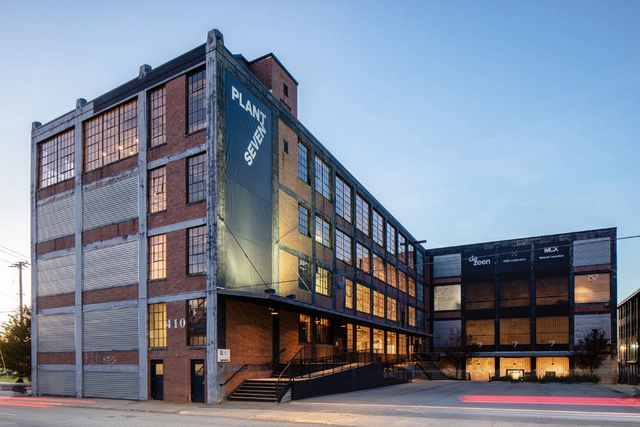A step-by-step outline on how to turn 3D models in SketchUp into 2D documentation through LayOut.
Articles
Generating Documentation With SketchUp
Open Assembly: Spanish Town Halls Shaping Community and Place

Town halls and civic architecture are defined by spaces for gathering and focused work. Located in urban centers, they bring systems and people together. As one of the most diverse nations in the world, Spain balances a respect for history with an optimism for the future. Exploring environmental, social and economic impact, town halls represent emerging Spanish design culture and local values.
Trend Setting with Custom Wood-Based Interior Finishes

Wood-based materials manufacturer EGGER combines decor from furniture and interior design, as well as flooring, to create something entirely new.
Castle in France Built in the 21st Century Using Only Medieval Techniques

The building site is perhaps one of the most meaningful spaces for architects, as it is where the project comes to life, where techniques are actually applied, putting the project and the designer to the test. Many building sites are affected by work alienation, but they were once a place where craftsmen could learn and pass on knowledge. Today, with the evolution of construction techniques, centuries-old methods are in danger of being forgotten. This brings us to Guédelon Castle, located near the French village of Treigny.
The Architecture of North Caucasus

The little-known and remote area of North Caucasus is an intricate assemblage of territories, ethnicities, languages, religions, and, consequently, architectures, from Tsarist-era buildings to mosques, traditional bas-reliefs, and Soviet Modernism. The setting of controversial events and a heterogeneous cultural environment, in many ways, North Caucasus is a borderland between Europe and Asia, the former USSR and the Middle East, Christianity and Islam. Photographs by Gianluca Pardelli, Thomas Paul Mayer and Nikolai Vassiliev provide an introduction to the architectural landscape of the region.
The Architecture of Cantilevers

As a design feature, cantilevers can exist for any number of reasons, as rational results of form-making, impressive feats of engineering, or just unnecessary spectacles. Either way, they often result in buildings that appear both heavy and light at the same time and they present safely precarious situations for their inhabitants. The video describes what cantilevers are as well as some of the structural principles which govern their design like tension, compression, moment, and shear. It also goes over some great examples by architects like MVRDV, Rem Koolhaas, Ensemble Studio, and Richard Rogers. Finally, it concludes with appreciation for structural engineers and lists a few of the ones responsible for some of the most daring of delicate dangles.
Queer Looks On Architecture: From Challenging Identity-Based Approaches To Spatial Thinking

A growing number of theorists and practitioners have been discussing the impact of gender and race on the profession and theory of architecture. Issues linked to the relationship between the built environment, sexual orientation, and gender identity, however, remain particularly understudied, perhaps because of their relative invisibility and less clearly identifiable discriminatory consequences. Moreover, they are also completely neglected by design theory in the Francophone world. This article partially remedies the situation.
Design with Digital Technology: 3D Printing Opens New Possibilities in China

3D printing (as known as three-dimensional printing) is a type of rapid prototyping technology. It is a technology that uses powdered metal or plastic and other bondable materials to construct objects by printing layer by layer based on digital model files.
Can Architecture Firms Become Truly Carbon Neutral?

This article was originally published on Common Edge.
Martin C. Pedersen talks with Ron Rochon, managing partner at Miller Hull, about Carbon and the role of architectural firms in eliminating emissions. Discussing the EMissions Zero initiative, the current shortcomings of carbon offsets, and the way forward, the piece also questions the possibility of setting goals with the absence of an internationally, agreed-upon carbon cap.
Passive Ventilation, Shade, and Unique Aesthetics: 3 Case Studies of Perforated Enclosures

Perforated wall panels offer a variety of benefits: they can provide passive ventilation, shade, and unique aesthetics to any façade. In the case of companies like Dri-Design, which specializes in customizable and sustainable metal wall panels, perforated panels can be produced according to a wide variety of specifications, including different colors, materials, sizes, textures, shapes, and styles of perforation. Dri-Design’s perforated imaging series even allows architects to apply images onto their facades by varying the size, location, and density of the perforations.
Below, we examine three case studies of buildings using different perforated panels, considering each of their panel specifications and overall aesthetic effect on the buildings.
Charles and Ray Eames: The Designers Who Shaped the Course of Modernism
.jpg?1592346164&format=webp&width=640&height=580)
Charles (June 17, 1907 – August 21, 1978) and Ray Eames (December 15, 1912 – August 21, 1988) are best known for their personal and artistic collaboration and their innovative designs that shaped the course of modernism. Their firm worked on a diverse array of projects, with designs for exhibitions, furniture, houses, monuments, and toys. Together they developed manufacturing processes to take advantage of new materials and technology, aiming to produce high-quality everyday objects at a reasonable cost. Many of their furniture designs are considered contemporary classics, particularly the Eames Lounge & Shell Chairs, while the Eames House is a seminal work of architectural modernism.
Three Adaptive Reuse Projects in North Carolina Reinvent Historic Mills

Adaptive reuse or the process of transforming an older building by reusing the structure and changing its original purpose, has gained relevance over the years especially because it allows a complete optimization of the performance of the existing built environment. In a piece, originally published on Metropolis, author Elissaveta Brandon explores how "architects and developers are transforming the staples of the South—located throughout a 120-mile region from Winston-Salem to Fayetteville—into infrastructure fit for today". Transforming historic mills into design hubs, and mixed-use complexes, the article highlights 3 examples from North Carolina.
Early Call for Entries: A' Design Awards & Competition 2021-2022
.jpg?1622514221&format=webp&width=640&height=580)
The 2021-2022 A' Design Awards are now open and accepting early entires. The A’ Design Award & Competition provides valuable feedback and experience to its contestants. The A’ Design Award winners will proudly display their award trophies and design excellence certificates which grant them a high level of exposure and recognition.
"Blurring Out Boundaries Between Domestic and Institution": In Conversation with Korean Pavilion Curator Hae-Won Shin at the 2021 Venice Architecture Biennale
The 17th Venice Architecture Biennale is currently unfolding, and its 60 national pavilions reveal a wide range of answers to the question "How will we live together". This year's edition restates the Biennale's role as a platform for inquiry, prompting a collective re-evaluation of pressing issues such as migration, inequality, climate change or the role of technology. While in Venice, Archdaily met virtually within the Korean pavilion with curator Hae-Won Shin, as the pandemic prevented the exhibition's creators to be present at the Biennale. The conversation explored the thinking behind "Future School" and how it creates a framework for collective learning and exploration.
Natural Tapestry: Indoor Vertical Gardens in Different Project Types

Humans possess an innate tendency to seek connections with nature, regardless of the physical or geographical conditions in which we find ourselves. As we become increasingly detached from the wilderness, we develop means and strategies to bring nature back into our daily lives, even if only for a few moments.
There are many ways of domesticating nature, as seen throughout the history of mankind, through fascinating structures that challenge technical limitations, such as vertical indoor gardens.
How Black Concrete is Made (and its Application in 7 Projects)

As cliché as it may sound, there are two things that architects really like: exposed concrete and the color black. While concrete offers a distinctive rough aesthetic, emphasizing the tones, textures, and surfaces that shape the concrete mixture, the sobriety that the color black provides allows the architect to highlight specific characteristics precisely. Combining the two seems natural. But black pigmented concrete is not as common as we might imagine. Below we talk a little about the black concrete production process and some projects that use it.
Could Tall Wood Construction Be the Future of High-Rise Buildings?

Across the globe, tall wood structures have begun transforming the world of skyscrapers and high-rise buildings, ushering in an important shift to an architectural practice that has traditionally been dominated by steel and concrete. Typically defined as wood-constructed buildings over 14 stories or 50 meters high, the past six years have seen over 44 tall wood buildings built or underway around the world. Notable examples include Michael Green Architecture and DLR Group’s T3 and Team V Architectuur’s upcoming 73 meter residential tower HAUT.


























_Roman_Keller.jpg?1623778755)
_courtesy_ICD_ITKE.jpg?1623779114)
_courtesy_Professor_XU_Weiguo's_Team_02.jpg?1623779045)




































